Are you a changeling spy stalking the shadows of Sharn's underbelly? Perhaps you're a shifter who captains an elemental airship through the skies of Khorvaire.
Eberron is a world defined by innovation and intrigue, and nothing embodies that more than its iconic peoples. Read on to discover these distinctive species and how they've been updated in Eberron: Forge of the Artificer.
- The Iconic Species of Eberron
- Updated Species in Eberron: Forge of the Artificer
- Dragonmarks and Your Origin
The Iconic Species of Eberron
While any of the species from the Player's Handbook can shape a story in Eberron, these additional species have played prominent roles in the world's past, present, and future.
Whether born from arcane invention, a harbored spirit, or partial lycanthropy, each brings something uniquely Eberron to the table:
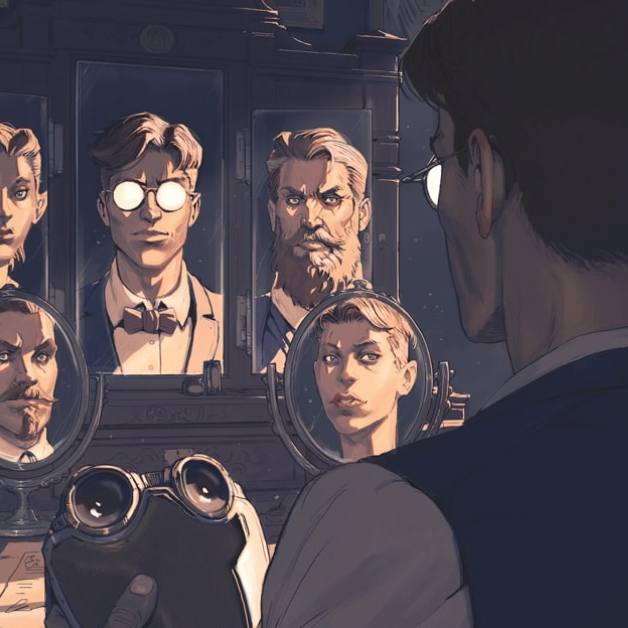
Changeling
Gifted with supernatural shapeshifting, changelings shift appearances like others change clothes—crafting personas with their own names, histories, and secrets.
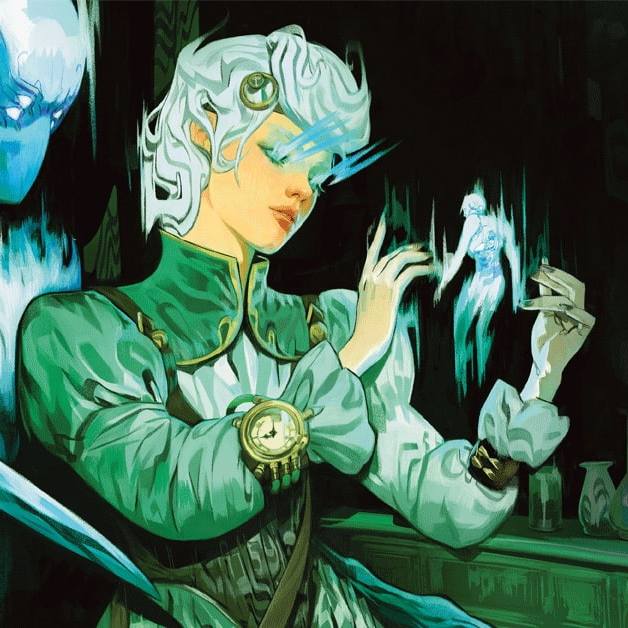
Kalashtar
Kalashtar are individuals who have gained supernatural instincts and psionic abilities because they are bound to quori spirits from the plane of dreams.
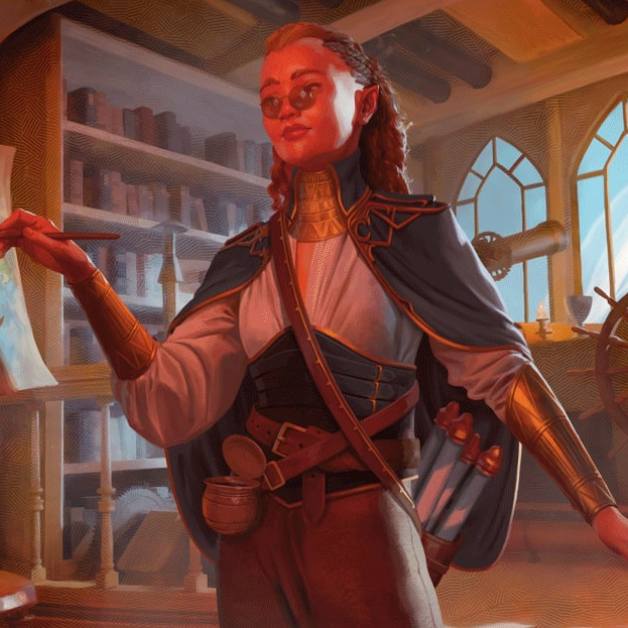
Khoravar
Known as “children of Khorvaire,” Khoravar blend elven and human ancestry and often serve as bridges between cultures.
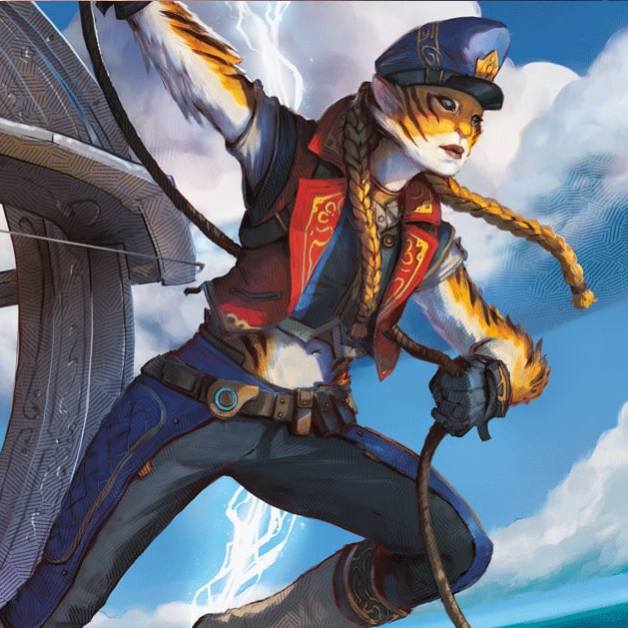
Shifter
Sometimes called “weretouched,” shifters draw on lycanthropic heritage to briefly embrace a bestial form, unleashing heightened instincts and supernatural resilience.
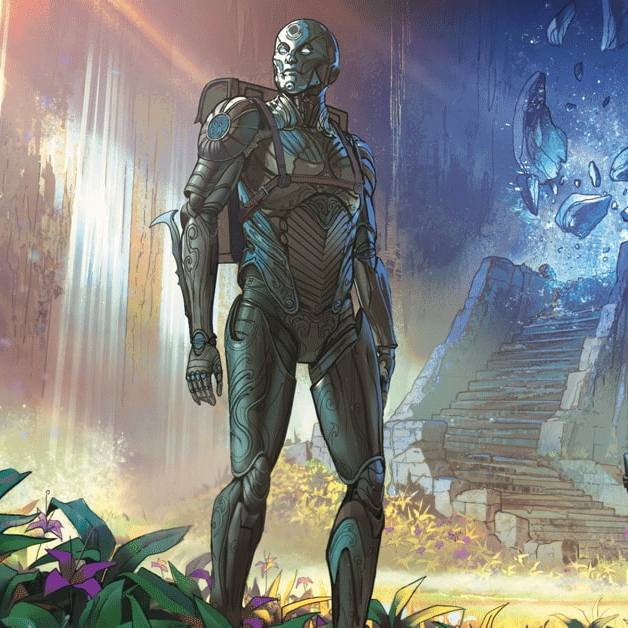
Warforged
Constructed for war but gifted with sentience, warforged are living constructs made of wood, stone, and steel.
Updated Species in Eberron: Forge of the Artificer
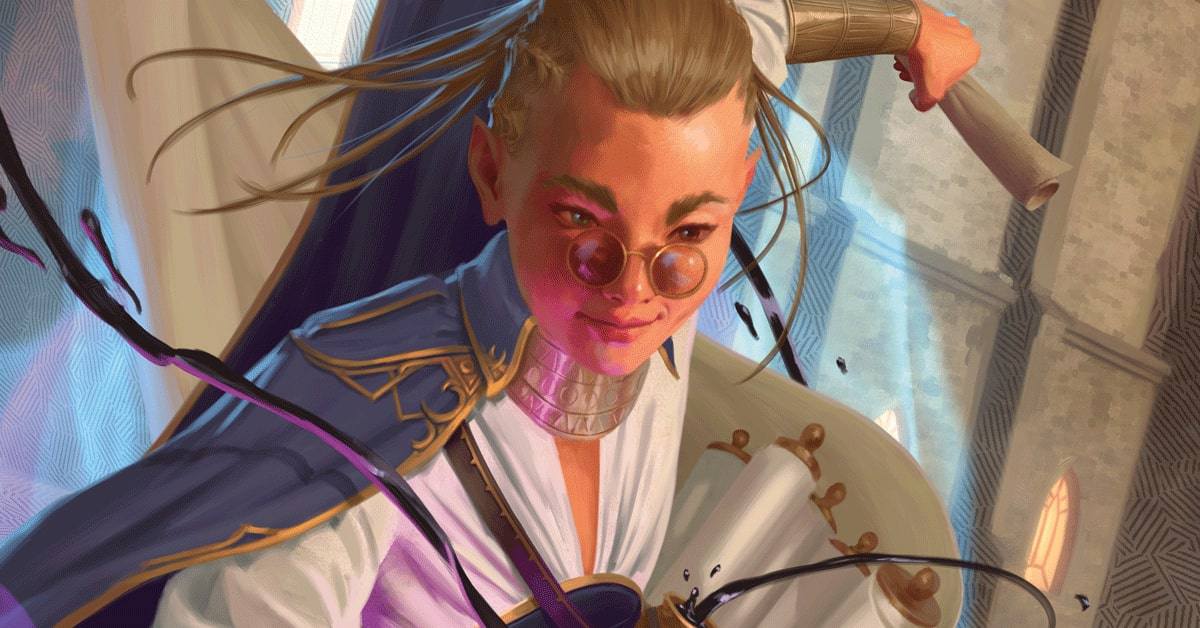
|
SPECIES |
WHAT'S NEW |
|---|---|
|
Changeling |
|
|
Kalashtar |
|
|
Khoravar |
|
|
Shifter |
|
|
Warforged |
|
Ability Scores Come From Your Background
Like the species in the new Player's Handbook, species in this book no longer determine your ability score bonuses. Instead, your background shapes your ability score adjustments, skill proficiencies, and provides an Origin feat—reflecting your character's personal journey.
Want a deeper dive into this change? Learn more about the changes to species in the new Player's Handbook.
Dragonmarks and Your Origin

Dragonmarks are one of the most iconic elements of Eberron—arcane sigils that manifest on the skin and awaken mystical talents tied to ancient family lines. These marks sometimes appear to species or bloodlines that aren't part of the family's lines, and these occurrences have grown increasingly common in recent years.
In Eberron: Forge of the Artificer, dragonmarks are no longer limited by species. You gain a dragonmark by choosing a background that provides a Dragonmark feat, or by selecting a Dragonmark feat at later levels.
Any character, regardless of ancestry, can now manifest any dragonmark, though there are story implications to consider.
Your Dragonmark Reflects Your Path
When selecting a dragonmark, discuss with your Dungeon Master about how it came to be and what factions will take an interest in your character. Here are four paths to consider:
Dragonmarked Heir. You were born into a dragonmarked house and carry its legacy. You may have undergone a formal rite of passage—known as the Test of Siberys—to awaken your mark. Your connection to house politics and obligations could be a major part of your story, and you can choose a house-affiliated background, like House Jorasco Heir, to represent your ties.
Distant Offshoot. You bear a mark associated with a dragonmarked house but lack official affiliation. Perhaps your ancestors left the house generations ago, or maybe the house doesn't know you exist. You're an anomaly, but one the houses might seek to reclaim. Consider taking a Dragonmark feat at level 4 or later to reflect a mark that awakens later in life.
Mark of Prophecy. Your dragonmark appears on a species that traditionally wouldn't manifest it. Whether you're a tiefling with the Mark of Healing or a goblin with the Mark of Shadow, your mark is unusual—possibly a sign of the Draconic Prophecy or a rare magical anomaly. You can reflect this by either choosing a Dragonmark feat at level 4 or later, or selecting a house-affiliated background and working with your DM to customize it.
Aberrant Dragonmark. Unlike established marks, aberrant dragonmarks are unpredictable and often feared. They can appear on anyone and members of dragonmarked houses often view those who bear these marks with suspicion. The new Aberrant Heir background and Aberrant Dragonmark feat are ideal tools for building this type of character.
Forge Your Story in the World of Eberron
From shape-shifting tricksters and psionically guided visionaries to beast-touched warriors and sentient constructs, the species featured in Eberron: Forge of the Artificer reflect everything that makes the Eberron setting unforgettably unique.
With updated mechanics and the freedom to pair any species with any class or dragonmark, you can build an Eberron character that's only limited by your imagination. What will you create—a warforged Rogue built for subterfuge? A changeling noble with a dozen names? A kalashtar Artificer haunted by prophetic dreams?
Your story is yours to shape. And in Eberron, there's no limit to what you can become.

Mike Bernier is the founder of Arcane Eye, a site focused on providing useful tips and tricks to all those involved in the world of D&D. Outside of writing for Arcane Eye, Mike spends most of his time playing games, hiking with his girlfriend, and tending the veritable jungle of houseplants that have invaded his house.








-
View User Profile
-
Send Message
Posted Jul 15, 2025So excited to finally get a look at this! Love the new Kalashtar, especially.
-
View User Profile
-
Send Message
Posted Jul 15, 2025I'm pretty pleased with how these species sound, particularly the half-elf. They seem like the jack of all trades they're known for being, but by making Friends their default cantrip, they still come across as the negotiators they're known for being too. But if you need your half-elf to be flexible, you can swap Friends out for something like Toll the Dead, Thaumturgy, Shillelagh, Produce Flame, Minor Illusion, Mage Hand, etc. The list goes on!
-
View User Profile
-
Send Message
Posted Jul 15, 2025Small shifters is a fun option.
-
View User Profile
-
Send Message
Posted Jul 15, 2025Never realized until today that I needed to play a wererat’s three foot tall great, great, grandson
-
View User Profile
-
Send Message
Posted Jul 15, 2025Why on earth would they make a species feature usable once every 1d4 days? That's going to be incredibly annoying to track.
-
View User Profile
-
Send Message
Posted Jul 15, 2025Warforged officially being constructs is very interesting, wonder if that will interact with things in strange ways now. Shouldn't be an issue for healing since they removed restrictions on healing spells, but some features like the Mace of Smiting and the Shatter spell will be dangerous against Warforged.
-
View User Profile
-
Send Message
Posted Jul 15, 2025I can see your concerns given the negative connotation of the term "aberration" and perhaps the general feeling that by making them non-humanoid they are being othered. However I think the thought process is consistent with what we saw in the new Monster Manual: creatures that have been transformed by the lower planes, like gnolls, are Fiends. (Question: Why aren't Tieflings fiends in the PHB!?). Creatures who come from or are influenced by one of the elemental planes are now Elementals (i.e. Aarakocra). Creatures transformed by aberrations tend to also be aberrations - and Kalashtar are basically a humanoid (Human) and an aberration (Quori spirit) sharing single body.
So whether that's a good or bad decision I would leave to you, but I don't think it's meant to signal "Kalashtar = bad".
-
View User Profile
-
Send Message
Posted Jul 15, 2025Eberron is (was?) such an incredible setting, I only run my games there. This feels oddly like a watering down of these races, and it only leads me to worry that you've turned Eberron in to "Faerun, but with mechanical people."
The Dragonmark rules are also some thin gruel--everyone can have a Dragonmark now! Wheee! Did the War of the Mark not happen in this new Eberron? Are the Barons just going to let some tiefling or whatever run around with a Mark of Shadow? If one of the PCs in a party suddenly develops a Dragonmark, despite not being part of ancestry, THAT should become the focus of the campaign. Like: "Holy #$%^! We need to hide you and find out how you got this thing that you ABSOLUTELY should not have!" while it slowly turns that PC insane.
I know I can always ignore the new new rules, and run my Eberron the way the Sovereign Host and Keith intended, but still. Sort of feels like we're Disney-fying the realms, and I don't know why.
-
View User Profile
-
Send Message
Posted Jul 15, 2025I hated it. I'm clear that the Eberron theme has incorporated many things between the medieval and aether punk, but this new art, I don't care if it's pretty or not, it just seems generic to me. In the concept art and what was published in 3.5 there was a unique touch, which reminded me of artists like Moebius. Eberron was very different from other settings and it seems to me that by appealing to the masses they sacrifice all of that. It's not a brave bet, it's in my opinion a cowardly way of not taking risks and trying to sell to a lot of people. For the rest, it seems that this book is going to be very small. I don't know what kind of lore it will keep. For my part, I'll see what mechanics work for me, I'll discard the art and stick with the kanon and whatever independent authors publish who seem to have the creativity that you lack.
-
View User Profile
-
Send Message
Posted Jul 15, 2025Thank you for making an Abberation playable race!!! makes me so excited to see what will come in the future! All the third party species have been cool, but to officially see it is another thing. What I've personally been waiting for!.
-
View User Profile
-
Send Message
Posted Jul 15, 2025Given that the Kalashtar are neither antagonistic nor themselves massacred in the lore that IS canon(Any novels are not, & said novels are the responsibility of the writers ever since 2020 at least), this is premature & borderline rabble-rousing.
The Kalashtar are, for the most part, good people partnered with survivors of a genocide of the good Quori at the hands of antagonists controlling & influencing the Quori(& a lot of Kalashatar tend to want to liberate the Quori still under oppression-induced evil), in 5e lore as it is. They acknowledge that genocide is bad in the previous 5e book on Eberron.
[Redacted]
-
View User Profile
-
Send Message
Posted Jul 15, 2025Personally, I really dislike the change to Changelings where they have advantage on Charisma checks while shape-shifted. It makes absolutely zero sense. Why does looking different make you more persuasive?
-
View User Profile
-
Send Message
Posted Jul 16, 2025I think it's more likely that in 2014 design only the three core books are required. If that's (currently) true for 2024, then the wilder PC types like aberrations and fiends have been left to the non-core books.
-
View User Profile
-
Send Message
Posted Jul 16, 2025I hope that's what shifter looks like while shifted. I prefer their normal form look mostly human, but anyone who has seen a shifter can spot the tells.
-
View User Profile
-
Send Message
Posted Jul 16, 2025Kalashtar aren't just funny looking humans, their bond with an immortal spirit gives them a different cognitive outlook than their human peers. Tieflings, by contrast, can be casually born to humans for no obvious reason, and there is no inherent difference between their minds and those of humans.
-
View User Profile
-
Send Message
Posted Jul 16, 2025Per lore, marks are still tied almost exclusively to races. It's just that PCs can break that rule, but if they do, they will be very exceptional, possibly tied to the Draconic Prophecy.
-
View User Profile
-
Send Message
Posted Jul 16, 2025Changelings get advantage on Charisma checks while shapeshifted. Or in other words, changelings have advantage on Charisma checks!
-
View User Profile
-
Send Message
Posted Jul 16, 2025Not in base form, they don't.
-
View User Profile
-
Send Message
Posted Jul 16, 2025Point of order: the Far Realm doesn't exist in Eberron. It's its own multiverse. Most of the aberrations of Eberron are tied to a plane called Xoriat in some way or another. The only exception that I'm aware of is the quori, whom this conversation began about. They are the immortals of Dal Quor, the Region of Dreams. I'm not even aware that quori were aberrations when they first appeared in D&D. They were "outsiders" with the "quori" subtype.
Also, if the Changeling is based on the one from MotM, I think that will be Fey still.
-
View User Profile
-
Send Message
Posted Jul 16, 2025I fear the term “weretouched” for shifters is as misapplied as “lycanthropes” has been used to denote all shapechangers of the man-to-beast type, and not solely werewolves, when “lycanthropes” literally means “wolf-man” (“Therianthrope” is the catch-all word).
“Weretouched” literally means “man touched” or “human touched”, as the “were” part of the word “werewolf” means “man” or “human”, thus meaning “man wolf” or “human wolf”.